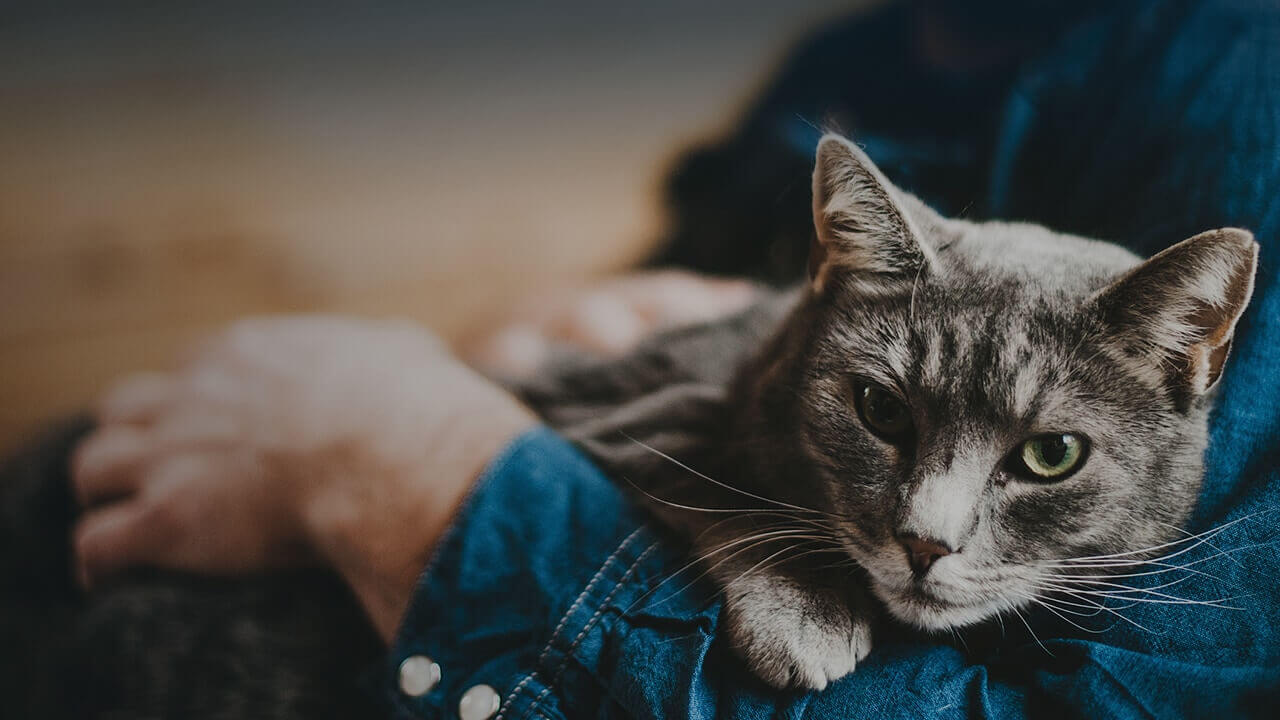

FOR CATS
Frequently Asked Questions
Diabetes mellitus is caused by an absolute or relative deficiency of insulin. Animals with an absolute or relative deficiency of insulin are called diabetics.
Insulin deficiency can develop for different reasons:
- Disorders of the pancreas—the pancreas is unable to secrete enough insulin.
- Other diseases or the presence of other hormones—may be antagonistic to insulin or cause resistance to insulin. Insulin is unable to function normally in the body.
No. Diabetes insipidus, also known as water diabetes, is caused when large amounts of dilute urine are produced. It is a far less common condition than diabetes mellitus. Diabetes insipidus is caused by problems in part of the brain or in the kidneys. There is no glucose present in the urine of animals with diabetes insipidus.
The most common signs of diabetes mellitus in cats are:
- Increased drinking
- Increased urination
- Increased appetite
- General signs, such as tiredness and poor coat condition
Polyuria is the production of large amounts of urine in a given period (eg, per day). Polydipsia is chronic excessive thirst. Polyphagia is great hunger.
No, your cat may have another medical problem. If your cat is having problems holding its urine, you should schedule a trip to your veterinarian as soon as possible.
Your veterinarian will measure your cat’s blood glucose and test your cat’s urine for the presence of glucose and ketones. Persistently high blood glucose levels along with glucose in the urine usually means that your cat has diabetes mellitus.
Cats of all ages can get diabetes. Diabetes most typically occurs in older cats. Obesity, genetics, and other conditions can contribute to the development of diabetes.
Problems associated with diabetes are generally seen in long-standing cases; they include cataracts in cats and chronic infections, as well as recurrent infections and diabetic neuropathy.
Cats with diabetes mellitus drink and urinate a lot. They may also have a good or increased appetite but usually lose rather than gain weight. Other common diseases where some or all of these signs are also seen include:
- Cushing’s disease (hyperadrenocorticism)
- Exocrine pancreatic insufficiency
- Kidney disease
To reach a definitive diagnosis of diabetes mellitus, your veterinarian will test your cat’s blood glucose levels and for the presence of urine glucose and ketones.
No. The exact reason why is unknown. Diabetes mellitus is due to a lack of insulin produced by the pancreas. It is not caused by a virus or infection. Diabetes in cats is thought to be an autoimmune disease.
Insulin is produced by the beta cells in the pancreas. Type 1 diabetes is due to the destruction of the beta cells with progressive and eventual complete loss of insulin secretion. This type always requires insulin therapy. Type 2 diabetes is characterized by dysfunctional beta cells (irregular insulin production) or the other cells of the body not responding to insulin properly. Type 2 diabetes may or may not require insulin therapy. In cats with diabetes, it more closely resembles Type 2 diabetes; so with aggressive treatment it is feasible that remission can occur and insulin therapy may be stopped.
It is only recently that cats were treated aggressively for diabetes. If a cat is kept monitored and does not have any other health problems, he or she should be able to have a normal life expectancy.
Yes, it is very similar. Your cat will be using similar medications, equipment, and monitoring methods as human diabetics use. Unlike people, cats typically require insulin therapy, even though their diabetes more closely resembles Type 2 diabetes in people.
The following signs may indicate hypoglycemia:
- Restlessness
- Trembling or shivering
- Unusual movements or behavior
- Unusual quietness or sleepiness
- Loss of consciousness (coma)
If you suspect your pet is experiencing signs of hypoglycemia, administered supplementation as recommended by your veterinarian. If no plan has been discussed, and if your cat is conscious, you should immediately treat your cat by pouring a small amount of a sugar solution (eg, corn syrup) onto your finger and then rubbing it onto your cat’s gums. The sugar is absorbed very quickly and your cat should respond in 1 to 2 minutes. The sugar solution should never be poured directly into your cat’s mouth since there is a risk that the solution will be inhaled into the lungs. Once your cat has responded to the sugar administration and is sitting up, it can be fed a small meal. Once the cat has stabilized, go immediately to your veterinarian for evaluation.
If your cat is diabetic, and drinking excessive amounts of water, give him/her all it can drink. Restricting access to water for your cat with diabetes can be life threatening.Your cat’s body is trying to combat the high blood glucose level by expelling the excess sugar out of its body through the urine. Once your cat is regulated, this will subside.
If diabetes is left untreated or unregulated, it could cause many complications. The most common chronic complication of diabetes in cats is the development of peripheral neuropathy, which is exhibited by weakness in the hind legs. Diligent control of hyperglycemia (high blood sugar) can potentially reverse the clinical signs of neuropathy. Recurrent infections are a common problem in both canine and feline diabetics.
Each case is different. There is no way to put a specific time on it. Sometimes the regulation process will require you to try different dosages, diets, or injection frequencies. Regulation can be achieved sometimes within a month, and in some cases, over a year from the time therapy first started. It is very important to work closely with your veterinarian during this process to avoid further complications. Even after your cat is regulated, frequent veterinarian visits will be necessary to maintain good health.
If your cat is not eating—do not give Vetsulin or any other insulin! Your veterinarian is your best resource for determining whether or not your pet should receive insulin. It is reasonable to hold off on administering insulin until you are able to contact your veterinarian, though contact should be made within 24 hours.
Your veterinarian will be the best person to determine your cat’s diet, as he/she best knows your cat’s needs. Ask about appropriate treats your pet could still enjoy!
To keep your pet’s diet constant from day to day, it is best to use commercially produced rather than homemade foods. Canned foods are generally lower in carbohydrates and preferred over dry foods. Consult with your veterinarian for the best diet to meet your cat’s specific needs.
Your veterinarian will use the blood glucose curve as a tool to either validate or adjust your pet’s insulin dose. The procedure is as follows: shortly after the animal has been given its first meal (preferably at home), the first blood sample is taken just prior to the insulin injection in the morning. Thereafter, blood samples are collected every 2 hours throughout the day for about 12 hours, if possible. These data are then plotted on a graph to generate a curve that is useful for veterinarians to determine how well the current insulin dose is working.
The results of the curve can be affected by several factors that may make the curve done at the veterinarian’s office an inaccurate portrayal of what is occurring at home. Feeding and exercise patterns are different, and stress can alter the glycemic response. Therefore, your veterinarian will take clinical signs (or lack thereof) into account when contemplating any change in the insulin therapy. In addition, it is not uncommon for curves to vary from day to day because many things can affect blood glucose levels such as appetite, digestion, metabolism, exercise, hormones, stress, etc.
Once regulated, probably minimally every 6 months, or more frequently if a problem is suspected. Your veterinarian will advise you on the frequency.
Stress hyperglycemia is caused when the animal is frightened or stressed. It is caused by the release of epinephrine (adrenaline). Glycosuria (glucose in the urine) is usually absent with stress hyperglycemia, because the blood glucose does not stay high for a significant period and therefore does not spill into the urine. Stress hyperglycemia may influence the diagnosis of diabetes, but usually is distinguishable by the lack of glucose in the urine.
Fructosamine is a type of protein in the blood that can be used to measure glycemic (glucose) control over a longer period. It is a useful tool in patients that experience a great deal of stress associated with veterinary visits because it is not as impacted by stress hyperglycemia. Your veterinarian may recommend periodic measurements of fructosamine to evaluate how well your pet’s blood glucose level has been controlled over the last few weeks.
If healthy and well regulated, most experts recommend every 3 months. Talk to your veterinarian about how often they would like to see your cat.
It is perfectly safe for your cat with diabetes to receive its vaccinations. In fact, this annual visit also gives your veterinarian a good opportunity to give your pet a complete checkup. By keeping your cat with diabetes healthy, there will be fewer fluctuations in its insulin requirements.
Normally animals need to have an empty stomach before they are anesthetized. A cat with diabetes that has not been fed needs far less insulin.
Your veterinarian will advise you on how much insulin to give your cat before it is admitted or may wish to administer a reduced dose of insulin for you. Usually a cat with diabetes is administered intravenous fluid therapy while under anesthesia. This hydrates the animal when it cannot drink on its own. Apart from needing a reduced amount of insulin and fluid therapy (which is also given to some non–diabetic animals undergoing anesthesia), your cat with diabetes is not at any additional risk from anesthesia than a non–cat with diabetes of the same age.
PETCARE ALLIANCE PARTNERS
Pet Diabetes Month is the property of Intervet Inc., d/b/a Merck Animal Health, a subsidiary of Merck & Co., Inc. or affiliated companies or licensors and is protected by copyrights, trademark and other intellectual property laws.
AlphaTrak 3 is a registered trademark of Zoetis Belgium S.A. and the Zoetis logo is a registered trademark of Zoetis Services, LLC.
Purina Pro Plan Veterinary Diets is a registered trademark of Société des Produits Nestlé S.A.
Vetsulin is a registered trademark of Intervet Inc.




